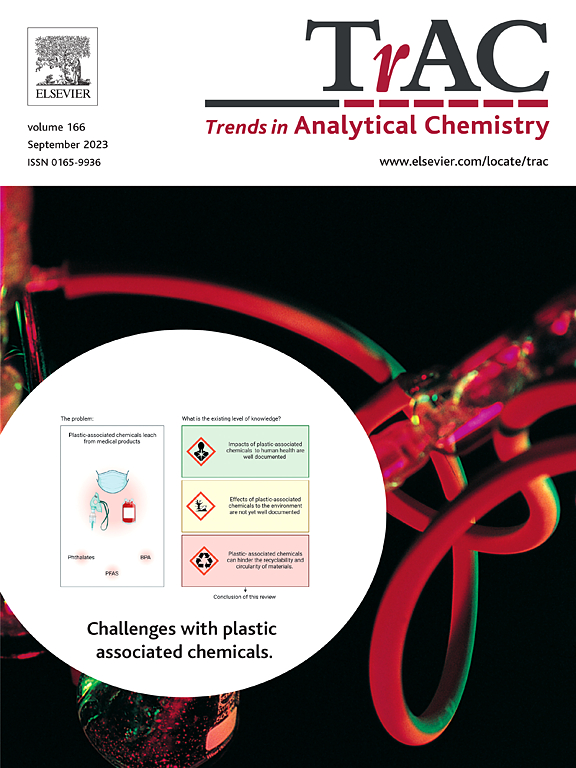液相色谱-高分辨质谱法在机器学习辅助下识别环境污染物
IF 11.8
1区 化学
Q1 CHEMISTRY, ANALYTICAL
引用次数: 0
摘要
化学品暴露可能与各种不良影响有关,但人们对其因果关系仍然知之甚少。为了应对这一挑战,基于液相色谱-高分辨质谱(LC-HRMS)的非目标筛选(NTS)越来越多地应用于识别环境和生物样本中存在的已知和未知化学物质。在本综述中,我们将重点介绍在 NTS 工作流程中整合预测毒理学,从而实现对新兴化学污染物的大规模筛查。我们总结了机器学习(ML)和深度学习(DL)在毒性预测中的应用,重点关注生物途径扰动和 LC-HRMS 数据处理,尤其是在峰值拾取和分子结构阐明方面。计算方法的长足进步有助于识别和优先处理新兴化学污染物,并提高其准确性、可重复性和有效性。ML 和 DL 将成为 NTS 工作流程中的下一代信息学工具,以更好地描述环境污染物的暴露特征。本文章由计算机程序翻译,如有差异,请以英文原文为准。
Machine learning-assisted identification of environmental pollutants by liquid chromatography coupled with high-resolution mass spectrometry
Chemical exposure can be linked with various adverse effects, but the causal association is still poorly understood. To meet the challenge, non-target screening (NTS) based on liquid chromatography coupled with high-resolution mass spectrometry (LC-HRMS) is increasingly applied to identify known and unknown chemicals with toxicological concerns present in environmental and biological samples. In this review, we highlight that the integration of predictive toxicology in NTS workflows enables large-scale screening for emerging chemical contaminants. We summarize the applications of machine learning (ML) and deep learning (DL) in toxicity prediction with a focus on biological pathway perturbation and LC-HRMS data processing, especially in peak picking and molecular structure elucidation. The substantial progress in computational approaches allows for identifying and prioritizing emerging chemical contaminants with improved accuracy, reproducibility, and efficacy. ML and DL will become next-generation informatics tools in NTS workflows to better characterize exposure to environmental pollutants.
求助全文
通过发布文献求助,成功后即可免费获取论文全文。
去求助
来源期刊

Trends in Analytical Chemistry
化学-分析化学
CiteScore
20.00
自引率
4.60%
发文量
257
审稿时长
3.4 months
期刊介绍:
TrAC publishes succinct and critical overviews of recent advancements in analytical chemistry, designed to assist analytical chemists and other users of analytical techniques. These reviews offer excellent, up-to-date, and timely coverage of various topics within analytical chemistry. Encompassing areas such as analytical instrumentation, biomedical analysis, biomolecular analysis, biosensors, chemical analysis, chemometrics, clinical chemistry, drug discovery, environmental analysis and monitoring, food analysis, forensic science, laboratory automation, materials science, metabolomics, pesticide-residue analysis, pharmaceutical analysis, proteomics, surface science, and water analysis and monitoring, these critical reviews provide comprehensive insights for practitioners in the field.
 求助内容:
求助内容: 应助结果提醒方式:
应助结果提醒方式:


